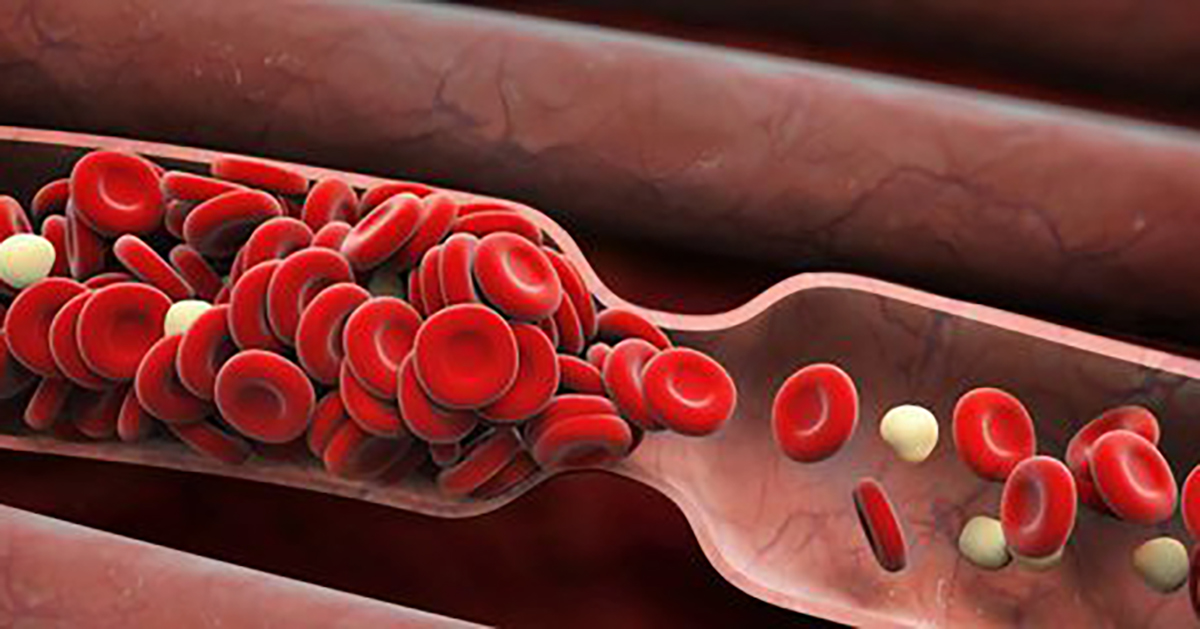Causes And Complications Of Vasculitis
Our blood is an essential part of our anatomy. It travels through our body in blood vessels (veins and arteries). Without blood traveling throughout our body, we would not be able to survive, which is why it's incredibly troubling when something goes wrong with this system. When our veins and arteries become irregular, it is called vasculitis. Vasculitis refers to the inflammation of the blood vessels. It can happen in many locations in the body. Each case is unique because it can derive from many different causes and create different complications with varying degrees of severity.
Ongoing Infections

Many infections can cause vasculitis. Sometimes the infection may come and go, and when this happens, the vasculitis generally fixes itself. The problem gets more severe when it comes to chronic infections. Some of the most common ongoing infections that cause vasculitis include hepatitis B and hepatitis C. These ongoing infections attack the liver, so look for signs of jaundice, exhaustion, and digestive problems. This is where most of the damaged blood vessels will be found as well. A patient must cure the infection to fully cure the vasculitis. Unfortunately, some individuals will carry the infection with them for the rest of their lives. Seventy-five percent of individuals with hepatitis C carry it with them for the rest of their lives.
Continue reading to learn about the allergic reactions that can also cause vasculitis.
Allergic Reactions To Medication

Medications can come with some serious side effects, including vasculitis. Some of the most popular medications that cause inflamed blood vessels are antibiotics, blood pressure medication, anti-seizure medication, and gout medication. Those who experience allergic reactions to medication need to contact their doctor immediately, as they may need to get off the medication and switch to a different one. Doctors may request regular visits to monitor patient progress with the new medication. Luckily, when vasculitis is the result of an allergic reaction, it will likely cure itself in a short amount of time.
Continue reading to learn about immune system diseases and their links to vasculitis.
Immune System Diseases

An immune disease attacks a person's immune system, which is designed to help the body fix itself in the case of an injury or illness. When the immune system doesn't work properly, it can result in a variety of different problems, including vasculitis. Some of the immune system diseases associated with vasculitis include rheumatoid arthritis, lupus, and scleroderma. Rheumatoid arthritis is a painful condition resulting from swollen joints, lupus is a disease in which the body attacks its own tissue, and scleroderma is when the body's tissue becomes excessively tight.
Continue reading to learn about how blood clots and aneurysms may come into play with regards to vasculitis.
Blood Clots And Aneurysms

When the blood vessel thickens, it gets more difficult for blood to pass, resulting in a blood clot. In very rare occurrences, the blood vessel may become so inflamed that it isn't able to let blood to a specific area of the body. If a part of the body can't get blood, it can't get oxygen, and without oxygen, the tissue starts to die, which can cause disastrous effects. In some cases, a part of the body might need to be amputated.
Aneurysms occur when the blood vessels become very weak. This is a big problem because we need our blood vessels to transport our blood. In some extreme cases, a person can even die if the blood vessels burst from weakness and create internal bleeding. Blood clots and aneurysms can be quite scary, but with the proper treatment, they can be managed before they become a serious problem.
Continue reading to learn about the next complication of vasculitis.
Organ Damage

Vasculitis could cause a stroke if it is placed in the brain. It can also cause heart disease if it occurs in the heart. Furthermore, it can cause kidney organ damage if it's concentrated in that area. Depending on the location of the vasculitis, the patient can have a severe problem with their organs. Vasculitis can be located in one area, or it can affect many areas of the body at once. Centralized vasculitis is much easier to control, and symptoms can start as small as fever or weight loss. Patients need to go to their doctor when they notice more serious symptoms. Treatments involve steroid medication and sometimes low dose chemotherapy used to regenerate the immune system.
Read about more causes and complications of vasculitis now.
Blood Cancers

An individual who is affected by any kind of blood cancer may develop vasculitis because these diseases are known to trigger the onset of the condition. Most cases of vasculitis that develop in individuals affected by blood cancers are associated with adverse drug reactions, infection development, and cryoglobulin deposits. The close association between vasculitis and blood cancers has caused a recommendation for those diagnosed with vasculitis to be searched for any signs of cancer. Standard radiologic examinations, standard biologic examination, and physical examination are usually adequate for the detection of cancer in a patient diagnosed with vasculitis. Cancer searches must be performed on vasculitis patients who are not responding to treatment, if vasculitis becomes chronic, or if vasculitis reaches a point beyond control.
Learn more about the complications and causes associated with vasculitis now.
Smoking

A regular smoker may develop a certain form of vasculitis as a result of their lifestyle choices. The most common type of vasculitis regular smokers are known to develop is referred to as Berger's disease (thromboangiitis obliterans). Most individuals who develop Berger's disease use tobacco products or smoke cigarettes. The pathogenesis of Berger's disease is not currently known, but it is thought that the chemicals in the tobacco products used by an affected individual produce irritation in the linings of the blood vessels that feed the tissues of the peripheral digits. Another theory that may explain the development of Berger's disease in individuals who use tobacco products is that substances in these products induce an abnormal and upregulated attack by the immune system on the cells that form the lining of the blood vessels. The inflamed blood vessel linings in the peripheral digits produce swelling and cause the formation of small blood clots that restrict the proper flow of blood to these tissues. The result of this vasculitis process is often the development of gangrene and amputation.
Get more information on the complications of vasculitis now.
Vision Loss

The most common type of vasculitis known to produce vision loss as a complication is referred to as giant cell arteritis. Giant cell arteritis describes when the lining of the blood vessels located in the head become inflamed. Inflammation in these blood vessels causes these tissues to swell, which reduces the quantity of blood that is physically able to move through them. Vision loss may occur in a giant cell arteritis patient when the main blood vessel responsible for providing oxygenated blood to the eye tissues becomes too inflamed and swollen to allow an adequate amount of blood through. When the eye tissues do not receive enough oxygenated blood, they begin to shut down and die. It is this hypoxia that causes an affected individual to experience blindness or vision loss as a result of their vasculitis. This complication usually starts or only occurs in one eye and tends to have a sudden onset.
Keep reading for more on the complications and causes of vasculitis now.
Pneumonia

Vasculitis develops in an individual when the walls of their blood vessels become inflamed. One of the most common causes of inflammation of the blood vessels is due to a mistaken response by an individual's upregulated immune system. When a pathogen invades the lungs, the immune system is triggered into action to mediate damage caused by the pathogen. Numerous types of white blood cells move to the site of the pathogenic invasion, and certain hormones are released to assist with this effort. In affected individuals, the immune response to pneumonia or infection of the lungs is thought to trigger other immune responses directed toward the cells that make up the blood vessel walls. These immune responses are by mistake and attack healthy cells in the patient's body. The mistaken immune attack on the cells of the blood vessel walls causes damage to these tissues. The tissue damage induces a greater immune response that produces vasculitis.
Uncover more details on the cause and complications of vasculitis now.
Sepsis

Individuals may develop sepsis if they are affected by vasculitis that has been triggered by an infection in their kidneys, lungs, stomach, skin, or bladder. Vasculitis patients are more likely to develop sepsis because their immune system already has abnormalities that have caused their vasculitis. An upregulated immune system makes individuals more likely to have other issues related to the way their immune system responds to allergens and infections. An affected individual's immune system can have an overwhelming response to an infection in the body, which causes a mass release of certain chemicals into the blood. These chemicals released in the blood produce systemic and widespread inflammation around the body and numerous vital organs. The already compromised blood vessels in a vasculitis patient leak and the normal flow of blood around the body becomes impaired. The patient's vital organs begin to fail simultaneously as their blood pressure drops, causing death without prompt and adequate medical intervention.